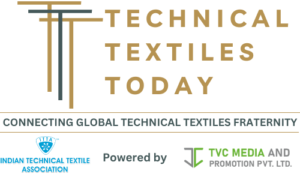With quick developments in high-performance, intelligent, and sustainable textiles, the technical textiles market is leading the way in industrial change. The industry is expected to grow steadily over the next ten years as sophisticated textile solutions are integrated into global industries. Technical textiles have a vibrant and bright future thanks to ongoing investments in nanotechnology, AI-driven production, and circular economy principles.

Market Overview The global technical textiles market is projected to witness robust growth, reaching a valuation of USD 241.5 billion by 2035, up from USD 230.9 billion in 2025, registering a CAGR of 6.2% during the forecast period. The market expansion is driven by increasing applications across various sectors, including healthcare, construction, automotive, aerospace, agriculture, and defense.
Technical textiles are specialized fabrics designed for enhanced performance rather than aesthetics. These textiles exhibit superior durability, mechanical strength, thermal resistance, and chemical stability, making them indispensable across multiple industries. Continuous investments in research and development, advancements in fiber technology, and the rising demand for sustainable solutions are shaping the market landscape.

With the growing adoption of smart textiles, fire-resistant materials, antimicrobial fabrics, and biodegradable fibers, technical textiles are playing a crucial role in modern industrial advancements. Government initiatives, environmental regulations, and technological progress are further fueling innovation in the sector.
Key Market Growth Drivers
- Smart Textiles Revolution: Integration with Wearable Technology & IoT
- Smart textiles embedded with sensors and IoT components offer real-time data analytics, biometric monitoring, and adaptive functionalities.
- Applications include:
- Healthcare: Biosensors for real-time patient monitoring and drug-delivery fabrics.
- Military & Defense: Thermal-regulating and moisture-resistant uniforms.
- Sports & Fitness: Compression garments with heart rate and muscle monitoring sensors.
- Sustainability and Circular Economy Principles
- Eco-friendly and sustainable textile production is gaining traction due to stringent environmental regulations.
- Trends include:
- Bio-based technical textiles utilizing organic cotton, hemp, and algae fibers.
- Closed-loop recycling systems reclaiming fibers from industrial waste.
- Low-impact dyeing processes reducing water and energy consumption.
- Medical Textiles Expansion
- Growing demand for high-performance medical textiles due to hygiene concerns and infection control measures.
- Key innovations:
- Wound-healing textiles with nanoparticles for infection detection and accelerated recovery.
- Antimicrobial hospital linens to reduce pathogen transmission.
- Biodegradable surgical textiles to minimize medical waste pollution.
- Automotive Textiles: Enhancing Safety, Comfort & Sustainability
- Technical textiles are increasingly used in automotive interiors and components for durability and energy efficiency.
- Emerging trends:
- Fire-resistant and thermal-insulating fabrics for passenger safety.
- Recycled and sustainable upholstery materials.
- Smart car seats with integrated climate control and ergonomic sensors.
- Geotextiles Driving Infrastructure & Construction Growth
- Geotextiles play a crucial role in infrastructure projects, aiding in road stabilization, erosion control, and soil reinforcement.
- Key applications:
- Road construction with high-strength, UV-resistant fabrics.
- Erosion control using water-permeable geotextiles.
- Drainage systems with advanced filtration textiles for urban development.
Market Trends (2025-2035)
- Nanotechnology in Textiles: Development of self-cleaning, moisture-wicking, and odor-resistant fabrics.
- Smart Fabrics: AI-powered textiles with adaptive temperature control and real-time health monitoring.
- Circular Economy Integration: Increased adoption of recycled and bio-based textile solutions.
- Automation in Manufacturing: AI-driven production lines optimizing efficiency and reducing waste.
Regional Market Insights
- United States: Leading in medical textiles, focusing on biodegradable surgical fabrics and recyclable automotive textiles.
- United Kingdom: Strong emphasis on sustainable textile manufacturing and R&D in smart textiles.
- European Union: Government-led initiatives promoting eco-friendly textile innovations and aerospace applications.
- Japan: Pioneer in AI-driven smart textiles and advanced filtration materials.
- India: Emerging as a global leader in technical textile production, backed by government initiatives like the National Technical Textiles Mission (NTTM).
Competitive Landscape The technical textiles market is highly competitive, with key players focusing on innovation, sustainability, and strategic collaborations. Major companies include:
- DuPont: Specializes in protective and medical textiles with a strong emphasis on sustainability.
- Freudenberg Group: Offers nonwoven fabrics catering to automotive, construction, and healthcare sectors.
- Ahlstrom-Munksjö: Provides fiber-based solutions for filtration and medical applications.
Recent Industry Developments
- Polyester Recycling: Innovations in chemical recycling processes for sustainable polyester production.
- Advancements in Smart Textiles: AI-integrated textiles for various industrial applications.
Market Segmentation By Application:
- Agrotech, Buildtech, Hometech, Indutech, Sportech, Packtech, Mobiltech, Meditech, Clothtech, Geotech,
- Protech, Oekotech By Process:
- Nonwoven, Composites, Other By Region:
- North America, Latin America, Western Europe, Eastern Europe, East Asia, South Asia Pacific, Middle East & Africa
